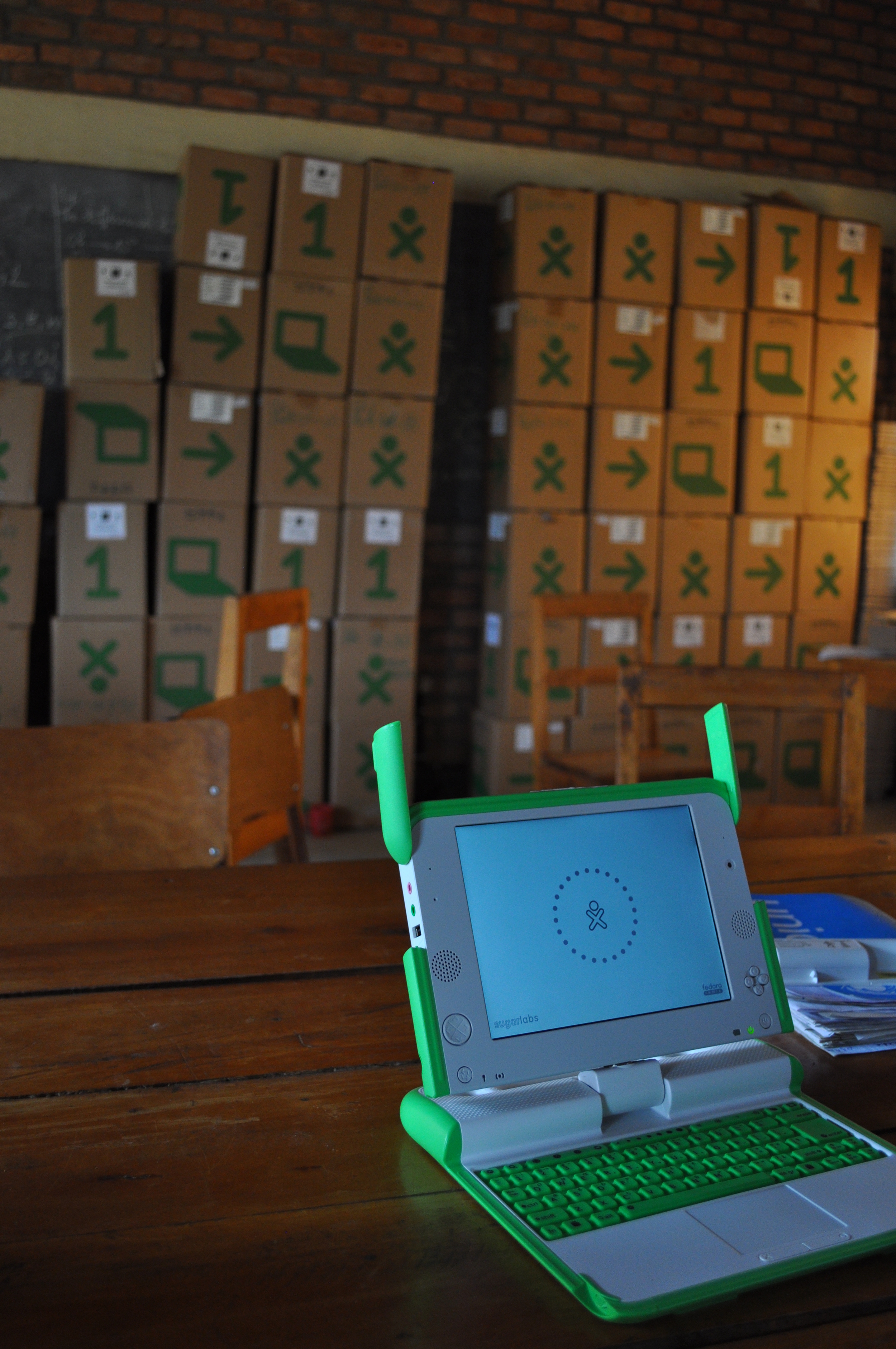Recently, during a five week trip to Africa, I got the opportunity to vis it a school and a hospital in Mayange, a rural town in Rwanda. Mayange is a beneficiary of both the UN's Millennium Villages Project and the One Laptop Per Child program. The Millennium Villages Project is an effort to eliminate poverty in which the UN selects 12 of the poorest villages in different climates in Africa to improve education, healthcare, agriculture, business and other key components of a thriving society. These 12 towns acts as pilots in a greater poverty elimination effort.
From what the people we met told us, the impact of Millennium Villages has been striking. The impact of One Laptop Per Child, which aims to put an ultra-cheap ($165 + training and maintenance costs) laptop in the hands of each child (not family, and not school), has been a bit more questionable. This is particularly true when you look at its per-dollar impact.
it a school and a hospital in Mayange, a rural town in Rwanda. Mayange is a beneficiary of both the UN's Millennium Villages Project and the One Laptop Per Child program. The Millennium Villages Project is an effort to eliminate poverty in which the UN selects 12 of the poorest villages in different climates in Africa to improve education, healthcare, agriculture, business and other key components of a thriving society. These 12 towns acts as pilots in a greater poverty elimination effort.
From what the people we met told us, the impact of Millennium Villages has been striking. The impact of One Laptop Per Child, which aims to put an ultra-cheap ($165 + training and maintenance costs) laptop in the hands of each child (not family, and not school), has been a bit more questionable. This is particularly true when you look at its per-dollar impact.
The School
It was around noon on a Tuesday when we arrived at the rural school. Today was a half day, which they do twice a week to keep costs low. The morning students were returning home as the afternoon students were arriving to take their places. Each kid was carrying his or her papers or books. No one had their laptop. Where were these $165 laptops? Left at home. Even if they wanted to use their laptops, they couldn't do much with them. As is common in this town, the internet hadn't been working for several days.
The teacher who showed us around was proud to show off the gadgets. Apparently the kids love taking pictures of themselves with the built-in camera. That was as far as the "impact" he mentioned went.
The school lunch program, however, he praised. By giving otherwise hungry students free lunch at school, attendance had increased dramatically. You want kids to get an education? Feed them.
The Hospital
The true lost opportunity for OLPC funds really hits you when you go to the hospital. This town, as a beneficiary of Millennium Villages, was one of the lucky ones. They had adequately trained nurses. Refrigerators to store medicines. Equipment to test people for malaria and HIV, and the drugs to treat them. And, perhaps most significantly, birth control.
Our guide was nearly boastful about the family planning clinic, and he awkwardly pushed us through the crowd of women awaiting treatment. He whipped out a packet of birth control pills and explained to us how they worked: "Green pills for three weeks. Pinks pills for one. Don't get them confused. Is very bad."
In just a few years, the usage of birth control pills had increased from non-existent to over 60%. When families have just two extra mouths to feed, instead of seven or eight, children have more food, more clean water, and more medicine.
Healthcare premiums are just $2 per person per year (true cost is $10 - $20), but most people still can't afford that.
The Impact
No doubt, OLPC has added value to the students it has reached. The question though, is how much? Is this really the best use of limited resources?
Education is critical to reducing poverty, and certainly, technology is a means to access nearly infinite educational resources online. But if we give one laptop per family, or set up a computer lab in each school, we would touch far more people for far less money.
The choice comes down to this: do you give a family with six children six laptops? Or do you give them one laptop to share, and then cover the healthcare premiums of another 500 children?